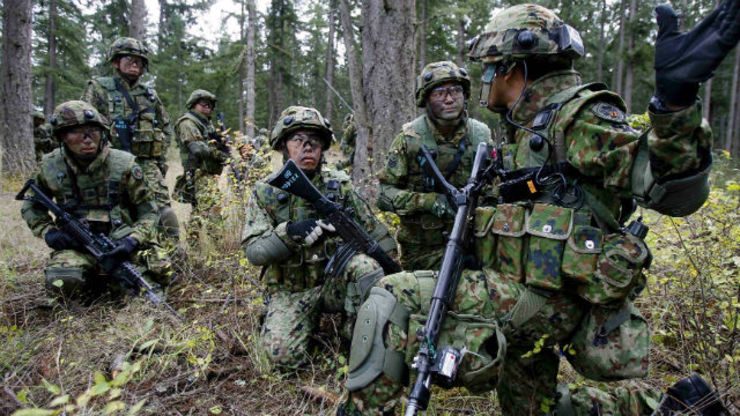SUMMARY
This is AI generated summarization, which may have errors. For context, always refer to the full article.

NEW YORK, USA (UPDATED) – The United States and Japan unveiled new rules for defense cooperation Monday, April 27, in a historic move that will give Japanese forces a wider global role amid concerns over China’s rising sway.
Under the revised guidelines, Japan could come to the aid of US forces threatened by a third country or, for example, deploy minesweeper ships to a mission in the Middle East.
US Secretary of State John Kerry and Defense Secretary Ashton Carter revealed the new rules alongside Japanese Foreign Minister Fumio Kishida and Defense Minister Gen Nakatani after talks at a New York hotel.
Although officials said the new doctrine is not aimed at China, there has been increasing concern over moves by Beijing to try to scoop up disputed areas of the South China and East China Seas.
But they pointedly made mention of North Korea as another source of tension in the region.
Kerry stressed the United States saw the disputed Senkaku Islands, known in Chinese as the Diaoyus, as firmly under Japan’s control.
Washington “commitment to Japan’s security remains ironclad and covers all territories under Japan’s administration, including the Senkaku Islands,” Kerry said.
The sovereignty of the isles has been a source of friction between Tokyo and Beijing for decades.
The top US diplomat said the new guidelines would make Japan safer, and bring greater stability to the Asia-Pacific region.
Historic transition
“Today we mark the establishment of Japan’s capacity to defend not just its own territory, but also the United States and other partners as needed,” Kerry told a joint press conference.
“This is a historic meeting. It’s a historic transition in the defense relationship between our two countries.”
The guidelines came a day before US President Barack Obama rolls out the red carpet at the White House for Japanese Prime Minister Shinzo Abe.
Nakatani said that since 1997, when the defense ties were last revised, “the security environment in the United States and Japan has changed dramatically.”
The new guidelines would “draw a picture of the Japan-US alliance for the next decade and beyond,” Nakatani said, revealing he had also laid flowers earlier at the 9/11 memorial in tribute to those killed in the September 11, 2001 attacks.
In an implicit reference to China, Kerry said: “We reject any suggestion that freedom of navigation, overflight and other unlawful uses of the sea and airspace are privileges granted by big states to small ones, subject to the whim and fancy of the big state.”
Under the previous rules, Japanese forces could assist American troops only if they were operating in the direct defense of Japan.
Kishida stressed the “importance of the rule of law,” adding “we cannot let unilateral action to change the status quo… be condoned.”
The amended guidelines were drawn up to reflect a reinterpretation of Japan’s constitution by Abe’s government last year allowing for “collective defense.”
Carter said the new rules removed the constraints of geography, adding that US-Japan cooperation had now moved “from being locally focused to globally focused.”
Missile defense
The new guidelines would “allow us to modernize the US-Japan alliance… helping us open new areas of military cooperation,” he said.
A US official earlier indicated Japan would now be able to defend US ships engaged in missile defense activities near its territory.
“It means that Japan can respond to attacks on third countries if they are in close association with Japan and if those attacks directly affect Japanese security,” the official added.
One possible scenario could have Japan shooting down a missile headed toward the United States, even if Japan itself was not under attack.
The reinterpretation of the constitution and the new defense guidelines are part of Abe’s bid to soften Japan’s constitutional commitment to pacifism.
The United States imposed the principle after World War II, but now strongly supports Japan’s new approach.
Veteran Republican lawmaker John McCain hailed the “historic moment” in ties that would help “meet emerging threats in space, cyberspace, missile defense, and elsewhere.”
And he welcomed “a reinvigorated Japan standing side-by-side with the United States to protect the rules-based international order our two nations have worked so hard to sustain and defend.” – Jo Biddle and Dan De Luce in Washington DC, AFP / Rappler.com
Add a comment
How does this make you feel?
There are no comments yet. Add your comment to start the conversation.